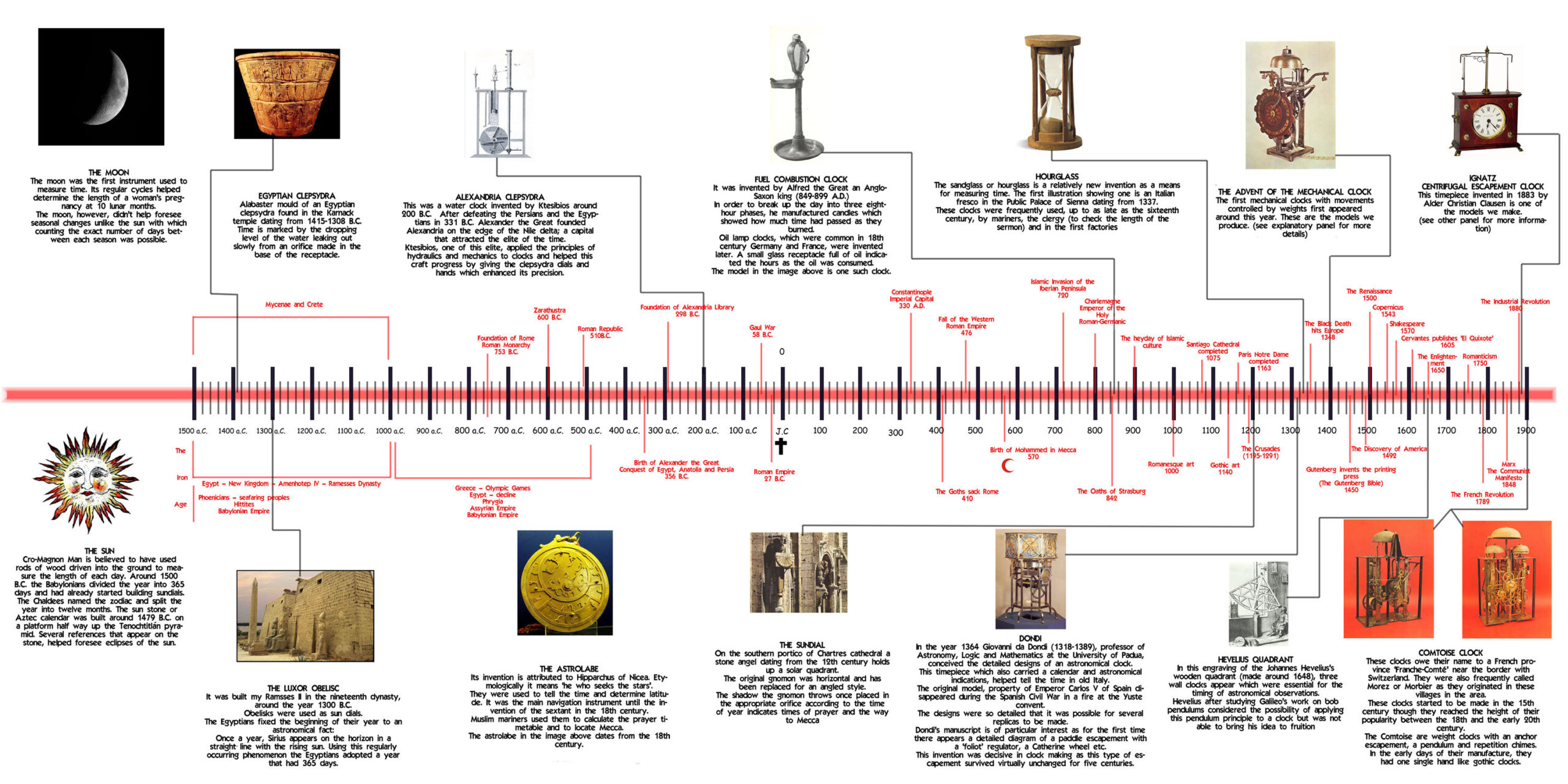
The history of the sundial is in part the history of the human being, and of his quest to know time.
The existence of sundials has been known for more than 3,500 years. At first they were in the form of a stone obelisk, but previously it was the observation of a significant element of the environment that would mark the times of our ancestors with its shadow.
Thousands of years ago, cultures had sufficient scientific knowledge of astronomy and mathematics to develop devices that allowed them to know the approximate passage of time. For hundreds of years they used clepsids or water clocks, which had simple shapes of containers or complex forms of furniture or construction with floats, cisterns, figures, etc. Other clocks worked with sand, fire, incense, candles, etc. The ancient monks used night and shift reading of the Bible to calculate the passing of the hours and to be able to determine the moments of the different prayers.
In Spain they arrived through the Romans who knew how to build them and used to place them in villas and roads, later their use declined until the arrival of the Arabs who were the spreaders of their use in Europe. Stonemasons and plasterers put them in their works. Alfonso X the Wise was a scholar of these subjects and had works by Arab and Jewish authors translated into Spanish.
Ancient clocks
The sundial imposed itself on other systems because of its regularity and for centuries it was the way to know the different parts of the day. With the birth of the mechanical clock, its decline began, although it coexisted with it during a period in which combined models were manufactured that united the two types.

We are familiar with a multitude of models and shapes of sundials, from the small ring or stick to the large building or square. They were built on the outside of walls and ramparts, and inside residences or churches where a small sunbeam marked the hours on floors and columns. Apart from the clocks on the towers of the churches and streets that we can still find as vestiges of the past, their use extended to so many types of measurements that it was even very common for them to be called “faltriquera”, which they carried in their pockets, hence their name.
In other cultures like the Mayan or the Hindu, they were made in great constructions that because of their orientation and form constituted immense monumental clocks, constituting true astronomical observatories, where solstices, equinoxes, etc. were verified.
Another instrument of those times was the nocturnal, nocturlabio, or star clock, an instrument for navigators, of several concentric circles that using some stars as a reference, could give us information about the night hours, tides, moon phases, etc.
In many cities, depending on their tradition, magnificent public and private collections are preserved, and it is easy to see the old clocks in naval museums or science and planetariums.
There are also many clocks on the walls of old buildings or parks that greet us and show us the passing of the day.
Go to sale of sundials
